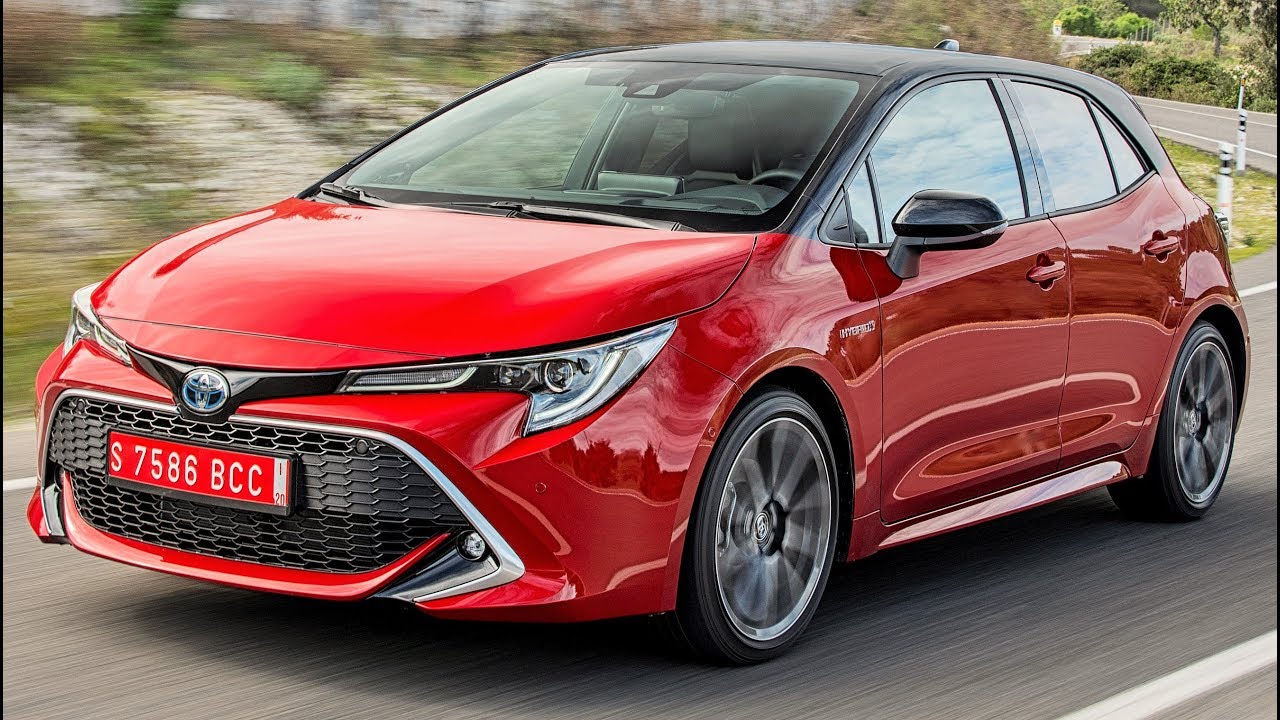2019 Toyota Corolla Hatchback Hybrid 2.0L – Style, Fun and Performance. 2019 Toyota Corolla Hatchback Hybrid 2.0L – Drive, Interior and Exterior. Subscribe.
The new 2.0 litre hybrid system develops 180 DIN hp/132 kW and 190 Nm of engine torque, also with the added power of a nickel-metal hydride-powered, 80 kW/650V electric motor which develops maximum torque of 202 Nm from zero rpm.
Taking full advantage of the added stability, handling and agility inherent in the newly adopted GA-C platform, it offers drivers an ‘energised drive’, with more power, a Sport driving mode and a 6-speed Sequential Shiftmatic transmission with steering wheel-mounted paddles for a more dynamic, engaging driving experience.
Moreover, the new 2.0 litre hybrid system is a unique proposition in this segment; no conventional powertrain can offer the same combination of performance and low emissions. And numerous measures have been taken to ensure that extra power is matched by enhanced fuel efficiency, lower emissions and quiet running.
Its outer wall thickness reduced to 2.3 mm, the aluminium die-cast engine block has been designed for minimum weight and a lowered centre of gravity, significantly enhancing the Corolla’s dynamic performance and engaging driving characteristics. Other weight reducing measures include a thinner cylinder head, a lightweight timing chain case, and a lighter valve train.
The high speed combustion achieved through the high tumble flow of a highly efficient intake port and long stroke, a new oil pump design and numerous friction-reducing measures shared with the 1.8 litre hybrid unit combine with a high compression ratio of 14:1 to enhance fuel efficiency.
Further improving fuel efficiency, the four-cylinder, 1,987 cm³ engine features an uprated Dual VVT-i system with VVT-iE (Variable Valve Timing-intelligent Electric) on the intake side, in which valve timing is controlled by an electric motor rather than oil pressure, enhancing output and fuel efficiency whilst lowering emissions.
Also lowering emissions, the exhaust system catalytic converter has been placed closer to the engine, and warm-up control after engine start optimised to achieve early, enhanced exhaust purification.
Furthermore, a balance shaft, amended engine mount position and shape, structural changes to the transaxle, gear tooth polishing, the adoption of a positive/negative hysteresis damper, a lightweight timing chain and revisions to the water pump motor all combine to reduce powertrain noise to exceptionally low levels.
As with the 1.8 litre system, the new hybrid powertrain also features a reduction in size of the transaxle, power control unit, motor and nickel-metal hydride hybrid battery.
In addition, the EV drive vehicle maximum cruising speed has been increased to above 115 km/h, and system control has been changed to prohibit engine start without accelerator pedal operation even before engine warm up starts. In combination, these measures substantially enhance fuel efficiency.
The 2.0 litre hybrid powertrain gives the Hatchback and Touring Sports 0 to 100 km/h acceleration times of 7.9 and 8.1 seconds respectively, and an identical maximum speed of 180 km/h.
Key to the Corolla interior’s feeling of spaciousness is a new instrument panel design which is 24 mm slimmer overall. The resultant reduction in height of the upper panel area reduces the perceived mass of the panel itself, and improves forward visibility whilst still allowing for a lowering of the front seat hip point to lower the vehicle’s centre of gravity and offer a more engaging driving position.
Conversely, the centre console has been made 42 mm wider and 22 mm higher to both improve switchgear and gear lever ergonomics and also enhance the wrap-around feel of the driver’s cockpit area. Simultaneously, the centre console armrest height has been optimised, and its sliding range increased by 20 mm for greater occupant comfort.
The ergonomic excellence of the driver’s cockpit area is further enhanced by new, steering wheel design featuring rim heating and an optimised switch layout. A range of new switchgear and instrumentation completes the Human Machine Interface (HMI).
Fully described in the Premium Comfort and Convenience chapter, this includes a new driver’s instrument binnacle incorporating a new 7” 3D-effect panel or a Multi-information display, a new, 10” colour head-up display, a new 8” central multimedia display, an electronic parking brake, a wireless phone charging pad and an electrochromatic rear view mirror.
A revised front seat design features changes to both the seat back and cushion springs and the optimisation of urethane pad thickness. In combination, these measures achieve a better driving posture with wider pressure dispersal for enhanced comfort and reduced long-haul fatigue.









